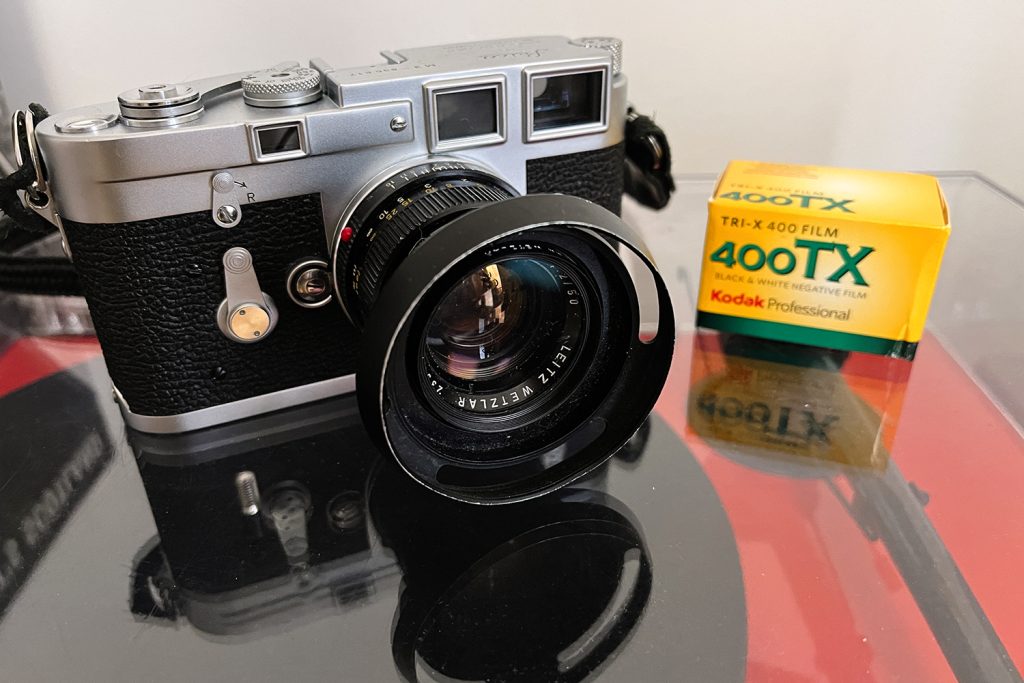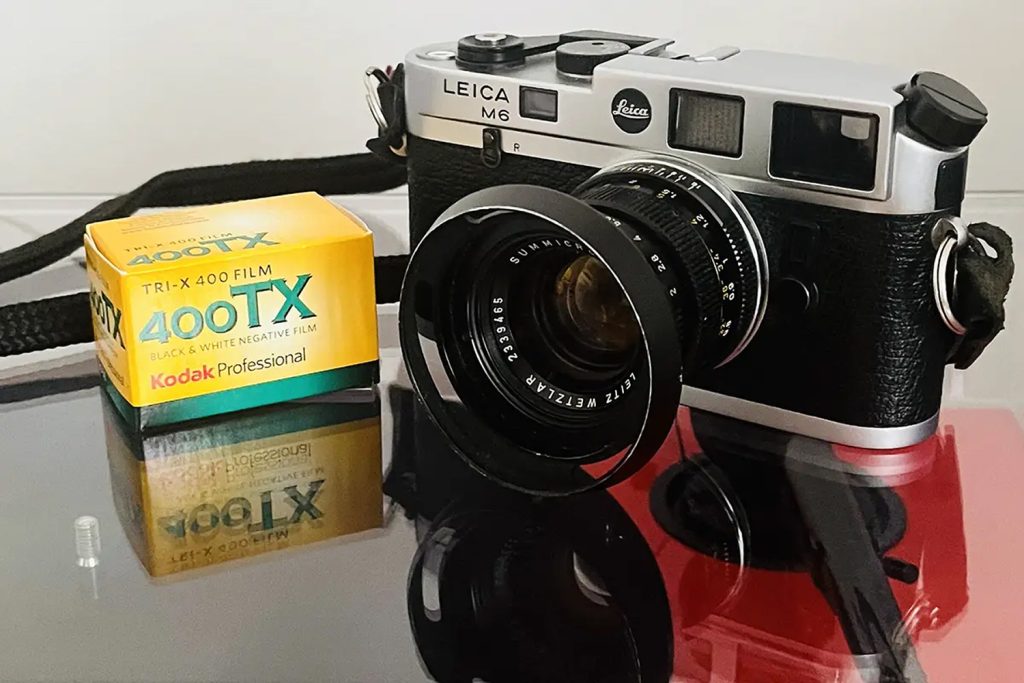
Choosing a first camera for street photography is a choice made all the more difficult by the many options found now on the virtual high street. Which system to choose? What brands to consider? Which model? The choice has to feel right and has to help, not hinder your first steps in taking photographs in the street. On some occasions a first compact may act as a springboard onto a better, perhaps more expensive camera, on others, a first choice may instead serve as an ‘old faithful’ throughout your photographic journey.
This choice, of course, is not the same for everyone, there is no one right answer, and there is a lot to consider. For street photography a camera should be small, quiet, and should not draw attention. If digital, it should be able to shoot raw and have decent battery life. Here are some things to consider before hitting that “add to cart” button.
Consider The Costs
Buying a camera can be deceptively expensive. All seasoned photographers can tell stories of that initial, seductive, arms-race of buying gear. It begins with choosing your first camera, then an upgrade, continuing with lenses, and before you know it, you’re buying second-hand Leicas on ebay.
The best way to avoid this, of course, is to set yourself a realistic budget. Sketch out how much you would like to spend, and do your best to stick to it.
Consider additional costs. For example, will you buy a kit, or the body and lens separately? Do you need a camera bag? With film, factor in monthly film and development costs. Digital cameras may need additional batteries and storage for those long days out in the city.
If buying new, before putting money down, check price-comparison websites as there may be local deals. Browse independent dealers as they may price-match and will almost certainly provide a more personal service. When buying a particularly expensive body or lens, don’t be afraid to ask for a bargain. Sellers are not adverse to throwing in the odd bag, strap, or SD card if it will close the deal.
SECOND HAND?
To keep costs down, it may be tempting to search second-hand. There are some excellent cameras on the second-hand market, and it may be the only place some models will be available. Nevertheless, be careful to consider the purchase. All cameras contain consumable parts that wear over time. Shutter curtains, for instance, may break down after several hundred thousand exposures. Search for refurbished cameras. These often have the consumable parts replaced and the camera may feel and act “as new”. If buying second hand, ask the seller how many exposures the camera has made.
TAKE CONTROL
Some street photographers swear by automatic point-and-shoot cameras for the set-and-forget manner of photographing, though most prefer to have complete control over their camera.
Controlling how much light is captured by the film or sensor, and how quickly, is a fundamental of photography. Slow the shutter speed to blur people walking past. Close down the aperture for maximum depth of field and make use of zone focusing. Stronger creative decisions are possible with full manual control.
Many cameras have various programmed, priority, and scene-modes (portrait, landscape, action, night-time, etc). It is always better to have full manual control should it be needed. The most thorough way to learn photography is to have complete control of the camera: of the ISO, of the shutter speed, and of the lens aperture. All the better to learn the laws of reciprocity.
Manual control should be a primary concern, however, particularly in such a dynamic environment as the street, it is important to consider measuring light. Light metering allows the camera to calculate a correct exposure based on the manual (or prioritised) controls dialled in, reporting – as it does – whether the photograph will be correctly, over, or under exposed.
A digital camera will certainly have a light meter on board, however, many film cameras (my Leica M3, for instance) have none. Through experience, the Sunny 16 rule can be used for metering, with occasional readings from a hand-held meter when the light changes dramatically, however, it is very useful for the camera to have even a rudimentary meter.
To Crop Or Not
Less expensive consumer digital cameras may reduce costs by incorporating a crop sensor, that is a sensor that is smaller than the 35mm film equivalent size of full-frame sensors. As the name suggests, crop sensors are smaller than full frame sensors and due to the smaller surface area, the resulting photo will have a reduced field of view. A lens with a focal length of 35mm will act, approximately, as a 50mm lens. Crop sensor cameras are perfectly acceptable choices, especially when starting out, however, it is important to keep the crop factor in mind when choosing lenses. Cameras with crop sensors tend to be smaller and as previously noted, this can be a benefit for street photography.
Choosing a full-frame sensor instead will cost more, however, images captured will be of a higher technical quality – clearer, more sharp, and with less noise at higher ISOs.

So Much Choice
There are many systems available to the modern photographer and some are better for the street than others. While D/SLRs (Digital / Single Lens Reflex) are multi-functional machines equally suited for photographing weddings and landscapes, they are not always the best choice for street photography. While having fast autofocus capabilities, D/SLRs are large, conspicuous, and loud, none of which helps the street photographer stay unseen while working.
Twin Lens Reflex (TLR) cameras were popular with certain street photographers, most famously, I think, with Vivian Maier. They can be inobtrusive on the street as the photographer need only look down through the ground glass rather than bring the camera to the eye. Until recently TLRs were the domain of film enthusiasts, however, with the return of Rolleiflex and their forthcoming DTLR, digital street photographers will have a waist-level option.
Mirrorless cameras are more quiet with their absence of the slap-up sound a mirror makes as it removes itself from between lens and sensor. Some of the best digital options on the market are in this category, though other mirrorless cameras come with less manual control.
Though not recommended, more casual street photographers often opt for either their smartphone or an action-cam such as a Go Pro for street photography. While a phone is a constant companion, there is likely little manual exposure control, and files are still not of a comparable quality to other systems.
The choice of many master street photographers, however, is the rangefinder. It can take time to become comfortable with the rangefinder focusing mechanism and the slight parallax caused by not seeing a scene through the lens. Nevertheless, the rangefinder is small, comparatively light, quiet, and with full manual control – including manual focus. It is thought of by many as the classic street photography camera.
Glass
In street photography, 35mm and 50mm focal length lenses are common, though for artistic or creative reasons some photographers may choose a wide angle lens, and others may choose telephoto. When choosing a camera with a fixed lens, the choice of focal length is of paramount importance. Of course, a camera with changeable lenses offers more flexibility. How will the focal length of the lens be an advantage during street photography?
When buying a lens, particularly – though not exclusively – for use with manual focus cameras, look for a depth of field scale on the lens barrel. In street photography, the depth of field scale can be employed to make use of zone focusing.

A FINAL THOUGHT
In street photography it’s important to choose a camera that feels intuitive, ergonomic, and natural to use. Choose a camera that is enjoyable to bring to the eye and trip the shutter release. To paraphrase Henri Cartier-Bresson, before long, the camera should become an extension of the eye, used without thinking of it. The camera is a tool, a lightproof box, used to fix what is seen. It should work for the photographer. Not against.